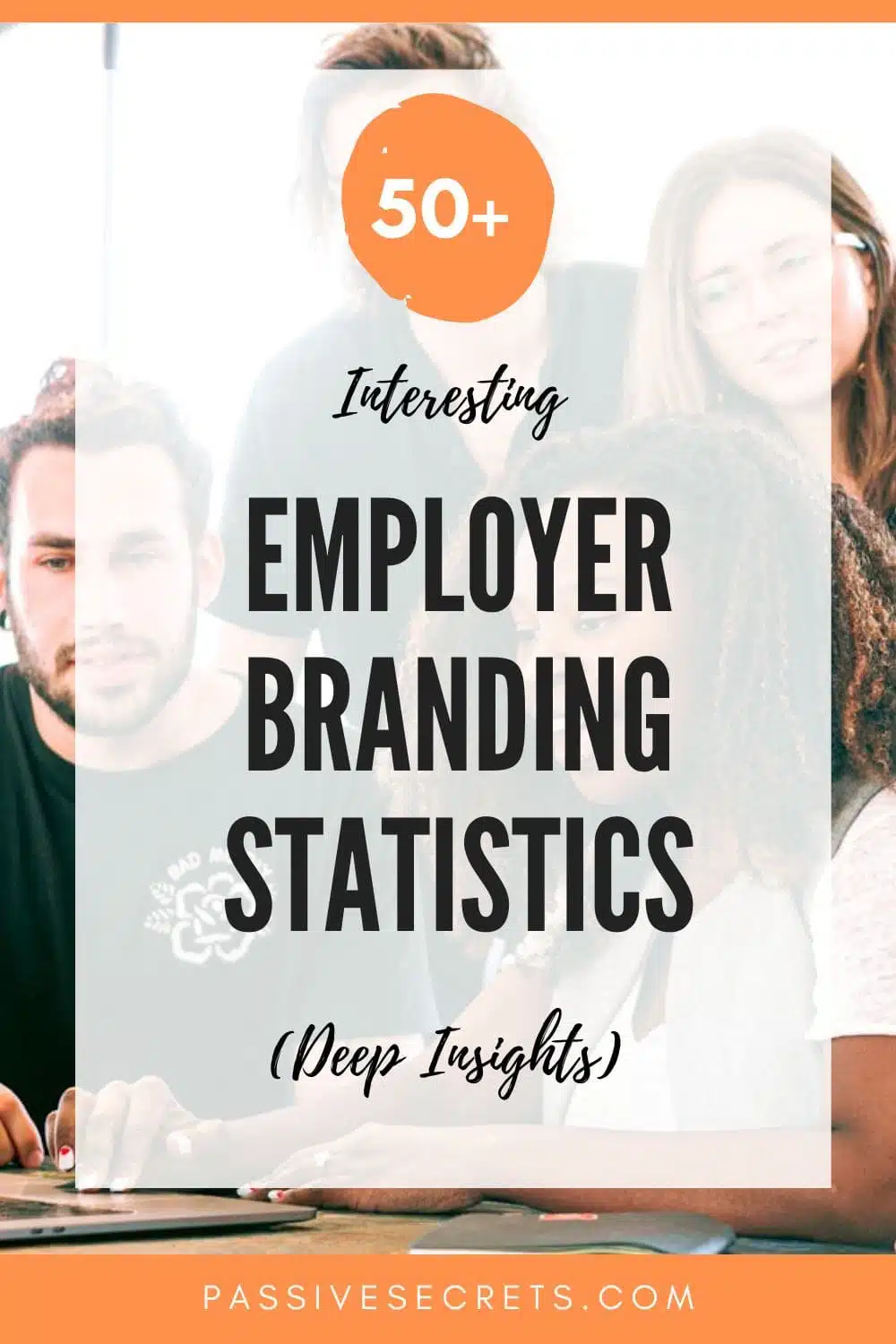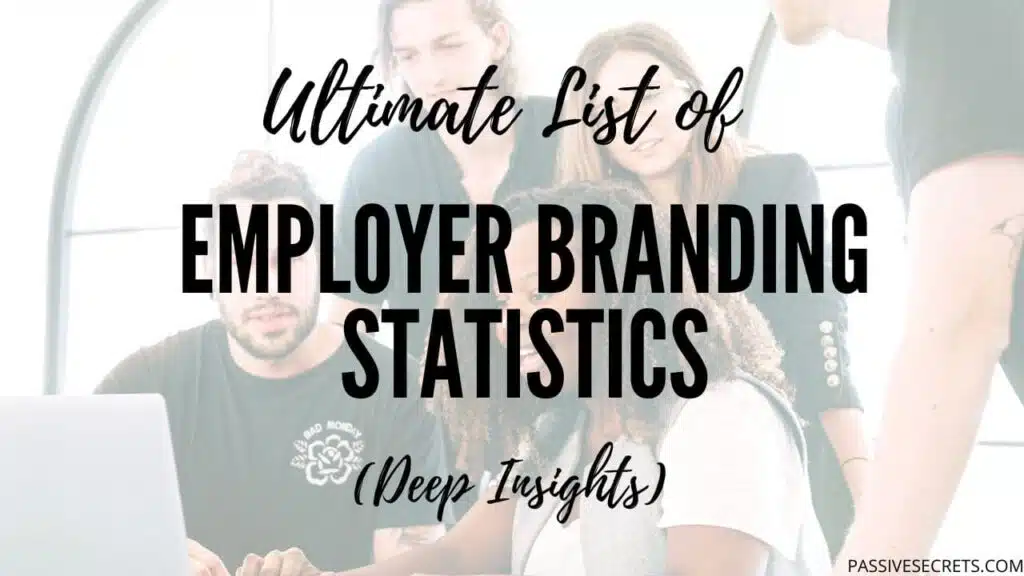
Employer branding is more than a marketing strategy; it reflects a company’s values and culture.
Imagine entering a job interview feeling excited and hopeful, leaving feeling confused and disconnected.
This is often the result of a lack of alignment between a company’s employer brand and its actual work environment.
A strong employer brand is essential for attracting top talent, fostering a positive work culture, and ultimately driving business success.
In this article, we’ll explore the importance of employer branding and how it can be leveraged to create a more authentic and engaging work environment.
Key Employer Branding Statistics (Editor’s Top Picks)
- Most (76%) of potential employees research and consider a company’s employer brand before applying.
- 96% of employees reported that they would be more inclined to apply for a job at a company with a positive employer brand.
- 92% of employees would consider switching jobs if another company has a more impressive reputation
- 72% of Employer Brand teams leverage real employees to promote their Employer Brand.
- Women (19%) are more likely to perceive a lack of opportunities and consider this a stronger reason to seek new employment.
- 76% of people stated they would actively search for or be open to a new job if their company reverted flexible work policies.
- 42% of candidates will not apply for a role if it doesn’t offer their preferred working model.
- According to 61% of people, wages remain the most important factor in workers’ choice of job offers.
- 57% of people prioritize a good work-life balance, with 55% of people considering job security critical.
- 54% of people consider a pleasant work atmosphere crucial. 59% of women tend to value this more than 50% of men.
- 22% of individuals desire their employers to offer more perks, including salary protection and fair compensation, to enhance their work-life balance.
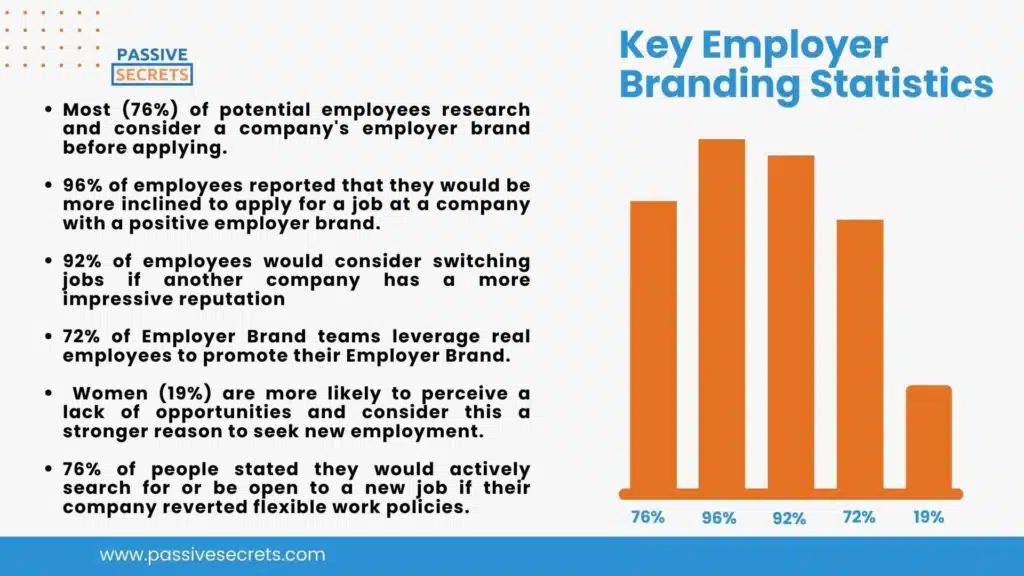
General Employer Branding statistics
1. Most (76%) potential employees research and consider a company’s employer brand before applying for a job. (source)
2. More than 75% of individuals who recently changed jobs utilized LinkedIn to aid their career decision-making process. (source)
3. Most talent acquisition leaders, accounting for 68%, acknowledge social and professional networks as one of the most potent tools for disseminating information about an employer’s brand. (source)
4. Around half of job applicants, approximately 52%, initially turn to a company’s websites and social media platforms to gather insights into the employer. (source)
5. The primary challenge job seekers encounter is the lack of understanding regarding an organization’s work environment and culture. (source)
6. In recent years, there has been a notable shift from a focus on employee engagement to a growing emphasis on employee experience. 55% of professionals recognize it as a prevailing trend, and 77% of job seekers acknowledge it as a decisive factor in their job search. (source)
7. Employer Brand professionals face challenges with talent scarcity, with 40% reporting difficulties, particularly in acquiring top talent. Furthermore, 30% reported having difficulties with identifying top talent. (source)
8. 96% of employees reported that they would be more inclined to apply for a job at a company with a positive employer brand, representing a 39% rise compared to previous years. (source)
9. A growing number of employees, now at 87%, are hesitant to apply for a job if they come across negative reviews, up from 58% previously, indicating a shift in prioritizing their own well-being and workplace quality. (source)
10. A considerable majority of employees, 84%, contemplated leaving their current positions in favour of organizations with better reputations. (source)
11. 92% of employees would consider switching jobs if another company has a more impressive reputation. (source)
12. Only a minority of Employer Branding professionals, specifically 20%, currently utilize AI in their roles, although an additional 15% are considering its adoption. (source)
13. A significant percentage, 72%, of Employer Brand teams leverage real employees to promote their Employer Brand. (source)
14. A growing number of employees, now at 42%, prefer video content to gain insights into a company’s culture, leadership, and daily operations, marking a 60% increase from 2021. (source)
15. One in six workers feel they don’t receive adequate opportunities for growth and development in their role. These workers are more likely to consider leaving their organization (42% vs 25%). (source)
16. Women (19%) are more likely to perceive a lack of opportunities and consider this a stronger reason to seek new employment. (source)
17. Most workers (69%) consider reskilling important, especially men, younger generations, and the highly educated. (source)
18. In a survey, over half, 53%, of HR professionals from Brazil indicated that the companies they worked for had strategies in place for employer branding. (source)
19. A 2021 US survey of professionals across various industries found that 30% of companies actively use brand guidelines, while 15% don’t have any in place. (source)
20. A quarter of male employees report engaging in constructive discussions about AI’s potential opportunities, contrasting with only 13% of female workers. Despite this, most receive no training on adapting to AI in the workplace. (source)
However, individuals between 25 and 34 benefit the most from regular AI training sessions, with 32% participating, compared to only 5% of the Baby Boomer generation.
21. Employers meet employee expectations on equity, especially equal pay (64% men, 52% women). Women and baby boomers are more critical of employers’ performance on equity. (source)
22. Gen Z respondents are more likely to believe that physical presence fosters career advancement, with 69% holding this belief compared to just half of Baby Boomers. (source)
23. Half of workers who identify as belonging to a minority group perceive obstacles in their career progression due to their identity. (source)
24. Despite being the most widely used job portal, the rate of individuals finding jobs through Indeed has decreased this year. However, it remains more effective for women (73%) than for men (58%). Men generally find all social media platforms more fruitful than women, except for TikTok and LinkedIn, where success rates are equal. (source)
25. Recruitment agencies are the most widely used resource among job seekers, particularly among older generations (51%). However, Gen Z job seekers prefer using Google for Jobs (43%). Younger generations are less likely to use recruitment agencies (42%). (source)
26. Job switching has increased steadily since 2021, with men (23%) and Gen Z (28%) leading the trend, compared to women (16%) and other generations. Looking ahead, men (30%), Gen Z (35%), and highly educated individuals (32%) are more likely to switch jobs soon. (source)
27. 76% of people stated they would actively search for or be open to a new job if their company reverted flexible work policies. (source)
28. About 43% of people are more inclined to apply to a job posting with a salary range, while 21% are less likely or unwilling to apply to a role lacking one. (source)
29. 42% of candidates will not apply for a role if it doesn’t offer their preferred working model. (source)
30. 56% of people express interest in applying to a job that offers a four-day workweek. (source)
31. Employers fare well regarding job security, with 68% of employees satisfied. Millennials and those with higher levels of education exhibit a more positive view across all aspects. (source)
32. The percentage of individuals who have changed jobs has risen from 12% to 16%, indicating a growing desire for higher earnings, meaningful work, or better job opportunities. (source)
33. Job portals are the most used tool for finding a job, but recruiters are becoming more popular. They are used by 41% of people in APAC and 26% of people in Europe. However, recruitment agencies are the second most used channel, used by 40% of switchers in APAC and 19% of Latin Americans (least popular in this region). (source)
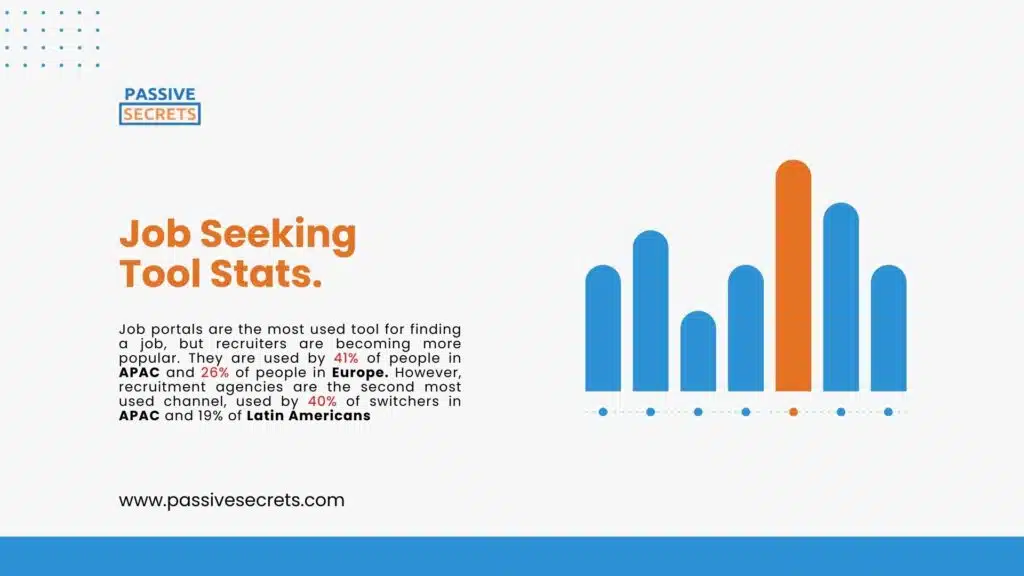
34. Indeed is the most used job portal, used by 56% of people, but its popularity is declining. (source)
35. About a quarter (28%) of workers globally use flexible schedules for better work-life balance, with younger (32%) and more educated (33%) individuals more likely to have this benefit. (source)
Over a third (37%) of workers want their employer to offer additional benefits, such as salary protection and fair compensation, to enhance their work-life balance.
36. Remote work options decreased more significantly for white-collar workers (14% decline) than blue-collar workers (7% decline), coinciding with a return to in-person work. As a result, more white-collar workers (34%) now work full-time in the office, up from 23% in 2021. (source)
37. The trend of job change is particularly strong in North America, where voluntary job changes have been unusually high (23% of respondents). Globally, almost one-quarter (24%) of individuals plan to change employers in the first half of the year, with intentions highest in Latin America (31%) and lowest in the Asia Pacific (21%). (source)
38. The unexpected rise of engineering as the most attractive sector in the research this year highlights significant shifts in sentiments in the post-pandemic era. (source)
39. Wages remain the most important factor in workers’ choice of job offers, according to 61% of people. (source)
40. 57% of people prioritize a good work-life balance, with 55% of people considering job security critical. (source)
41. The top three most important drivers are rated equally important in Latin America. A good work-life balance is important globally, in North America and APAC. (source)
Job security holds slightly more importance in APAC and North America, while a pleasant work atmosphere is Europe’s second most important factor.
42. Globally, an attractive salary and benefits are the top priority when choosing an employer (61%), especially among women (63%), middle-educated individuals (64%), and to a lesser extent, men (58%) and those with lower (56%) or higher (60%) education levels. (source)
43. 60% of women express a stronger sentiment towards having a work-life balance compared to 54% of men. In comparison, 52% of lower-educated individuals prioritize it less than 58% of mid-higher educated working-age adults. (source)
44. 55% of people claim that long-term job security is the third most important factor. This is more significant for 57% of middle—and higher-educated individuals than for 51% of lower-educated working-age adults. (source)
45. 54% of people consider a pleasant work atmosphere crucial. 59% of women tend to value this more than 50% of men. (source)
46. 22% of individuals desire their employers to offer more perks, including salary protection and fair compensation, to enhance their work-life balance. (source)
47. In 2021,16% of surveyed workers switched employers, up from 12% in 2020. Notably, 21% of younger workers aged 18-24 switched jobs the most, with no significant correlation between the rate of changing employers and education levels. (source)
48. Retail remains the sector where the highest percentage of the global workforce believes they have the necessary skills to work, with 46% expressing confidence. This sentiment is even stronger in North America, where 52% feel they have the required skills. (source)
49. Hospitality ranks second (43%), particularly in North America (50%), followed by ITC at 42% globally. Conversely, the chemical sector is perceived as less accessible, with only 28% of the global workforce feeling adequately skilled. This sentiment is even lower in APAC, where only 23% feel prepared. (source)
50. White-collar talent is more inclined to consider their skills sufficient for any sector than blue-collar workers (41% vs. 34%). (source)
51. The chemical and life sciences industries are perceived as less compatible with the workforce’s skills, with just over 20% of blue-collar workers and 33% of white-collar workers believing they possess the necessary skills for these sectors. (source)
52. Most workers (70%) consider career growth very or somewhat important. 89% of Latin Americans consider it important. In APAC, 86% consider it important, and in Europe, 59% consider it important. (source)
![50+ Interesting Employer Branding Statistics And Huge Trends 50+ Interesting Employer Branding Statistics And Huge Trends [2025] ᐈ Passive Secrets](https://passivesecrets.com/wp-content/uploads/2024/07/Key-Employer-Branding-Statistics-1-1-1024x576.jpg.webp)
53. In the past year, the importance of work meaning has increased more among white-collar workers (43%) than blue-collar workers (33%), with a global average of 39%. (source)
54. Most workers (76%) consider it important for their employer to offer reskilling/upskilling opportunities. This sentiment is more prevalent among white-collar workers (80%) than blue-collar workers (69%). (source)
Latest Employer Branding Trends 2024
Employer branding is key to attracting and retaining quality employees, especially in today’s competitive job market.
In 2024, most companies are beginning to recognize the importance of creating a strong employer brand that showcases their unique culture, values, and benefits.
Here are some of the trends in 2024 that are expected to influence and shape employer branding greatly:
1. Emphasis on Employer Value Proposition and Employee Retention
This trend is particularly important because it is a unique quality of every company. It is simply the values and benefits that a company seeks to add to its employees.
EVP is the meeting point between what the company requires from its staff and its willingness to give back.
As such, it is highly needed for every company’s success and helps build a positive, inspiring, and motivating workspace for workers.
An example of this is ensuring that the workload is not detrimental to any employees’ health and that good policies are in place to protect them.
Generous annual leave, sick pay, employee assistance programs, and other benefits are other ways to ensure staff well-being is considered.
Lastly, companies could develop webinars, seminars, and conferences to support employee well-being.
2. Diversity and Inclusion
Diversity and inclusion (DEI) initiatives are crucial for effective employer branding, and their role cannot be overemphasized in every workplace.
This has become a long-lasting trend that offers huge and diverse benefits to companies.
The first is that it helps to build a brand reputation. Every company should be especially known for a particular characteristic.
This information should be adequately passed on to the company’s staff to ensure they benefit the company regardless of people’s unique qualities.
Diversity and inclusion also help companies gain the trust of their customers because commitment is incorporated into a strategy that is reflected in every staff member’s operation.
Lastly, it helps maintain a good relationship between the employees and the employers because there is clarity on how they could uniquely add their inputs to the company in an appreciated way.
3. AI in Employer Branding
Artificial Intelligence (AI) is a trend significantly impacting employer branding.
It offers many benefits to every company, such as helping to craft compelling campaigns, enhancing employee experiences, and improving communication of the employer’s brand message.
Artificial Intelligence (AI) is changing the way companies approach recruitment. AI can help companies find the best candidates for the job, personalize their recruitment messages, and even help with the interview process.
These trends show that companies are focusing on creating amazing workplaces that attract and keep the best talent.
By prioritizing employee well-being, celebrating diversity and inclusion, and using AI to help with recruitment, companies can build strong employer brands that stand out in a competitive job market.
Conclusion
Employer branding is not just about creating a compelling image; it’s about creating a genuine connection with potential employees.
By aligning your employer brand with your company’s values and culture, you can attract talent and build a positive work environment. This will benefit your employees and your business as a whole.
Prioritizing employer branding helps create a massive competitive advantage in the job market, increase employee retention, and drive business growth.
This is because your employer brand reflects your company’s values and culture—make it count.
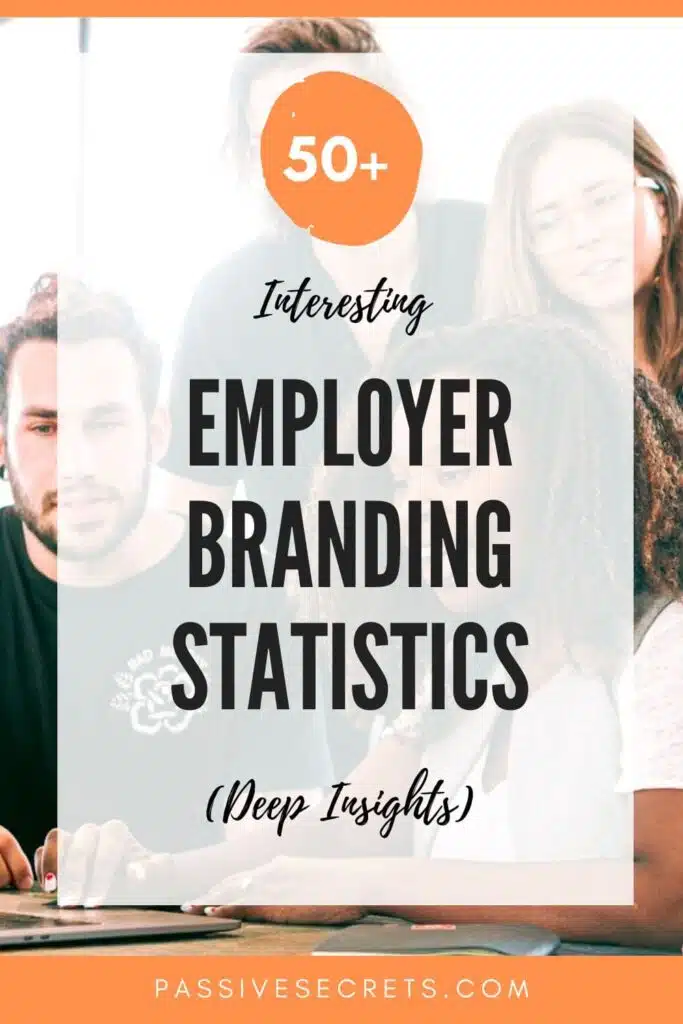
Related Posts
- 80+ Employee Benefit Statistics: Insights and Trends
- The Most Important Wealth Management Statistics You Can’t Afford to Ignore
- Enterprise Data Management: Essential Statistics and Emerging Trends
- 93 Talent Management Statistics to Help You
- Top Reputation Management Statistics and Trends to Improve Your Brand
- 36 Helpful Social Worker Burnout Statistics To Know
- 100 Business Process Outsourcing Statistics & Facts
- Top HR Outsourcing Statistics and Trends Every Business Must Know
- The Top Outsourcing Statistics You Shouldn’t Ignore
- 47+ Shocking 4-day Work Week Statistics To Know
- 105+ Supply Chain Statistics & Facts You Can’t Ignore
- Job Seekers Statistics: Unemployment Rates, Preferences, Challenges
- 95 Interesting Job Interview Statistics and Huge Trends To Know
- 60+ Helpful Change Management Statistics & Facts
- 65+ Employee Performance Management Statistics & Trends
- Workforce Management Statistics: Trends, Insights, & Opportunities
- 73 Revealing Workplace Distraction Statistics
- Workplace Romance Statistics: How Common Is Workplace Romance?
- 40+ Top Workplace Conflict Statistics You Should Know
- The State of Workplace Communication: Key Statistics and Trends
- 55 Workplace Collaboration & Teamwork Statistics

